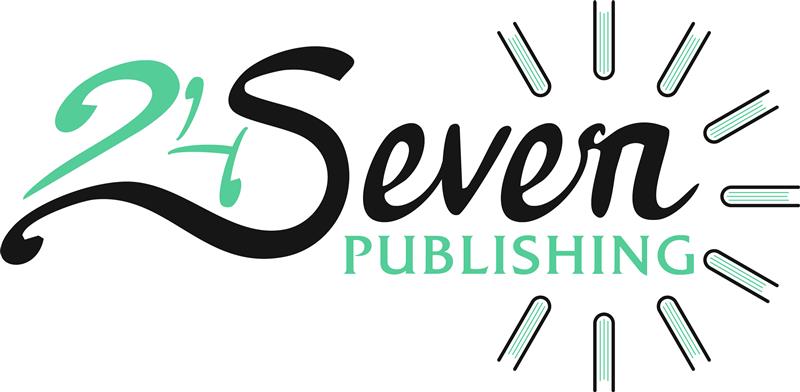Naming a character might seem like a small task in the grand scope of writing a children’s book, but it’s far more powerful than most authors assume. The right name does more than just identify your character—it shapes their personality, reinforces your theme, and builds emotional resonance with young readers. At 24 Seven Publishing, we help authors elevate their stories through comprehensive children’s book writing and book publishing consultation, and one of the most frequently asked questions is: “How do I choose the perfect name for my character?”
Let’s explore six creative, strategic, and practical ways to name your children’s book characters and make them unforgettable.
-
Match the Name to the Character’s Personality
One of the most effective ways to name a character is by starting with who they are, not just what they do. Ask yourself:
- Is your character adventurous or shy?
- Are they quirky, serious, silly, or strong?
- Do they have a defining trait that stands out?
The name should reflect their spirit. Think about “Max” from Where the Wild Things Are—it’s bold and punchy, perfect for a child who sets off on a wild adventure. Or “Chrysanthemum” by Kevin Henkes, which is a unique, elegant name that becomes a story element.
During our creative writing services, we often encourage authors to use the character’s core trait as a naming guide. A timid character might suit a soft-sounding name like “Ella” or “Nico,” while a troublemaker might carry a playful name like “Ziggy” or “Dash.”
-
Keep It Age-Appropriate and Read-Aloud Friendly
Children’s books are often read aloud—by parents, teachers, and even kids themselves. That’s why it’s essential to choose names that are:
- Easy to pronounce
- Memorable after one or two readings
- Fun to say
Avoid complex or overly exotic names that trip up readers. While it’s tempting to go with something unique, balance creativity with clarity. Imagine how the name sounds in a sentence, especially if it is repeated multiple times. In our book blurb writing projects, we often test name readability and sound for this very reason.
Test the name aloud: “Would a 5-year-old understand and repeat this easily?” If not, simplify.
-
Consider the Genre and Worldbuilding
Is your story grounded in a real-world setting? Or is it a whimsical fantasy with dragons and talking clouds?
For realistic stories, traditional or culturally relevant names may work best—like “Jamie,” “Nina,” or “Omar.” For fantasy or magical settings, feel free to play with invented names or nature-inspired choices like “Wren,” “Bramble,” or “Luna.”
Examples:
- “Ferdinand” (The Story of Ferdinand) – suits a regal and calm bull.
- “Zog” (Zog by Julia Donaldson) – quirky, short, and memorable for a dragon.
When we guide authors through book publishing consultation, we advise maintaining tonal harmony between your character’s name and your story’s genre and setting.
-
Draw from Cultural Roots and Heritage
If your character is from a specific culture, naming them authentically shows respect and adds depth to your story. But this requires thoughtful research—cultural names should reflect genuine heritage, not stereotypes.
Names like “Aiko” (Japanese), “Jabari” (Swahili), or “Saanvi” (Indian) should be used only if the character’s background supports it and only after careful cultural consideration.
This is especially important if your story explores themes of diversity, inclusion, or identity. In such cases, a name becomes more than a label—it’s a symbol of representation. If in doubt, consult sensitivity readers or editors through author branding solutions to ensure accuracy and respect.
-
Avoid Common Pitfalls and Naming Mistakes
Here are a few red flags we see during creative writing services:
-
Names That Are Too Similar
Avoid using character names like “Tim” and “Tom” or “Milly” and “Molly.” These can confuse young readers.
-
Unpronounceable or Complicated Names
Unless absolutely necessary for the story, skip names like “Eurydice” or “Siobhan” without phonetic guides. They break the flow during read-aloud sessions.
-
Outdated Names
Names like “Ethel” or “Lyle” might be charming to adults, but they rarely connect with younger generations unless contextualized (e.g., a story set in the past or with a humorous twist).
-
Unintentional Negative Associations
Always search the name online to check for undesirable meanings, headlines, or pop culture references. You don’t want to accidentally name your character after a criminal or meme.
A strong name should stand alone and feel fresh—even if inspired by tradition.
-
Try Wordplay, Symbolism, or Thematic Names
Children’s books are fertile ground for creative, whimsical, and symbolic names. You’re allowed (and encouraged) to bend the rules here!
- Use wordplay: Names like “Buzzbee,” “Miss Snip,” or “Wiggles” give instant character.
- Use themes: A garden-themed story might feature characters named “Petal,” “Thistle,” or “Sprout.”
- Use symbolism: If a character is brave, a name like “Leo” (lion) or “Valora” (strength) subtly reinforces their traits.
Authors who work with us on book blurb writing often realize their character names are doing double duty—engaging readers and revealing story layers.
Bonus Tip: Rework If It Doesn’t Fit
Even after settling on a name, you might find that it doesn’t fit once the manuscript develops. That’s okay! Many authors change names during revisions—especially after feedback from editors or test readers.
When you work with 24 Seven Publishing, our editorial team will give you honest, professional feedback on whether your character names serve your story—or need rethinking. This is a core part of our book publishing consultation process.
Final Thoughts: Naming Is Branding
At the end of the day, naming a children’s book character is more than a writing decision—it’s a branding one. Your character might end up on bookmarks, merchandise, sequels, and school reading lists.
Think “Madeline,” “Olivia,” “George,” or “Pooh.” These names are short, catchy, distinct—and now legendary.
A good name:
- Stands out
- Evokes emotion
- Connects with readers
- Grows with the story
So whether you’re at the early brainstorming stage or finalizing your manuscript, give your character names the attention they deserve.
At 24 Seven Publishing, our team is here to help—from initial children’s book writing guidance to full-service author branding solutions that shape your book’s identity for long-term success.

